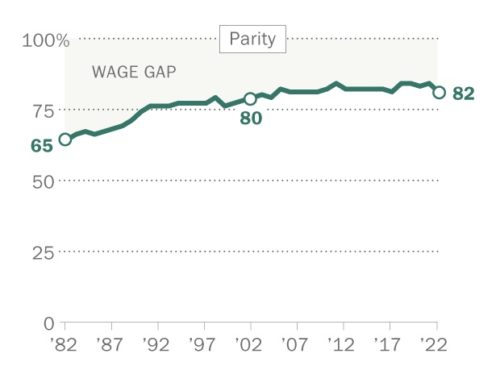The United Nations has released a surprising report showing that, for the first time since 1950, the working-age population in the world’s advanced economies is forecast to decline in 2016. And this drop is not a one-time event. Rather, the U.N. predicts that the working-age population will shrink by 5 percent in advanced countries by 2050. Such declines will curb real economic growth.
The U.N. study, “World Population Prospects: The 2015 Revision,” showed that Europe, North America and China have not have enough births to replace the number of people who have died, also called below-replacement fertility. Below-replacement fertility leads to a population decline unless it is counterbalanced by net migration.
The following countries can expect dramatic declines in their working-class population by 2050, according to the report:
- 23 percent in both Germany and Italy.
- 26 percent in South Korea.
- 28 percent in Japan.
Among rich countries, the U.S. remains demographically fortunate solely because of an expected large number of immigrants. Its working-age population should grow 10 percent by 2050, according to the U.N. report. The U.S. fertility rate in 2014 was estimated at 1.86 children per woman, which is below the replacement fertility rate of approximately 2.1.
What are some of the consequences of a decline in working-age population and an increase in the percentage of senior citizens?
- Economic growth suffers because companies will have difficulty finding enough workers.
- Demand will shift toward services such as health care and away from durable goods such as cars and new homes. William Dudley, president of the Federal Reserve Bank of New York, argued the aging of the baby boomers has made the economy less responsive to the Fed’s monetary medicine “because such age groups tend to spend less of their incomes on consumer durables and housing.”
- Growing numbers of elderly pose significant challenges to welfare and pension systems, imposing a financial burden on working-age population who support them and increasing the costs of maintaining health systems.
In a Wall Street Journal article on Nov. 22, 2015, entitled “How Demographics Rule the Global Economy,” Greg Ip wrote that, “Ever since the global financial crisis, economists have groped for reasons to explain why growth in the U.S. and abroad has repeatedly disappointed, citing everything from fiscal austerity to the euro meltdown. They are now coming to realize that one of the stiffest headwinds is also one of the hardest to overcome: demographics.”
The downside of living longer
One of the great achievements of the 20th century is a dramatic rise in life expectancy. According to the U.N. Population Division, one in five people is expected to be 65 or older by 2035 because of improved nutrition, sanitation, medical advances and economic well-being.
However, increased life expectancy, combined with declining birth rates, has caused many to worry about the cost of an aging population. We frequently hear warnings about “demographic time bombs” and fears that future generations will struggle to cope with an ever-increasing number of retired people, leading to declines in overall living standards.
Retirees’ skills go unused
Richard Blewitt, chief executive of HelpAge International, in a report entitled “Aging in the 21st Century,” warned that “the skills and knowledge that older people have acquired are going to waste, with many of them underemployed, underactive and more likely to become a drain on a nation’s resources.”
What can be done?
- Measures that could counter the expected decline in the working-age population include:
- Governments could introduce policies that will increase fertility, such as generous child support for working mothers.
- Companies could use more robotics and other technological innovations that substitute for human labor.
- Companies could also improve working conditions to accommodate an older workforce. In 2007, the German carmaker BMW redesigned a gearbox production line to ease the physical strain on its aging workers.
- Today’s workers could be urged to postpone retirement. In Japan, 22 percent of people over 65 were still working, compared with 18 percent in the U.S. The Japanese demographics suggest that the U.S. can implement measures to encourage our laborers to retire later, for example by providing tax credits to reduce the income tax burden for workers receiving Social Security benefits.
- Training could be offered to update the skills of older workers.
As a result of the 1965 immigration act, 40 million foreign-born immigrants now live in the United States, making up 13 percent of our population and offsetting our relatively low fertility rate. Unlike Asia and Europe, immigration has always been a formidable engine of economic and demographic growth for the United States.
Originally published in the Sarasota Herald-Tribune



